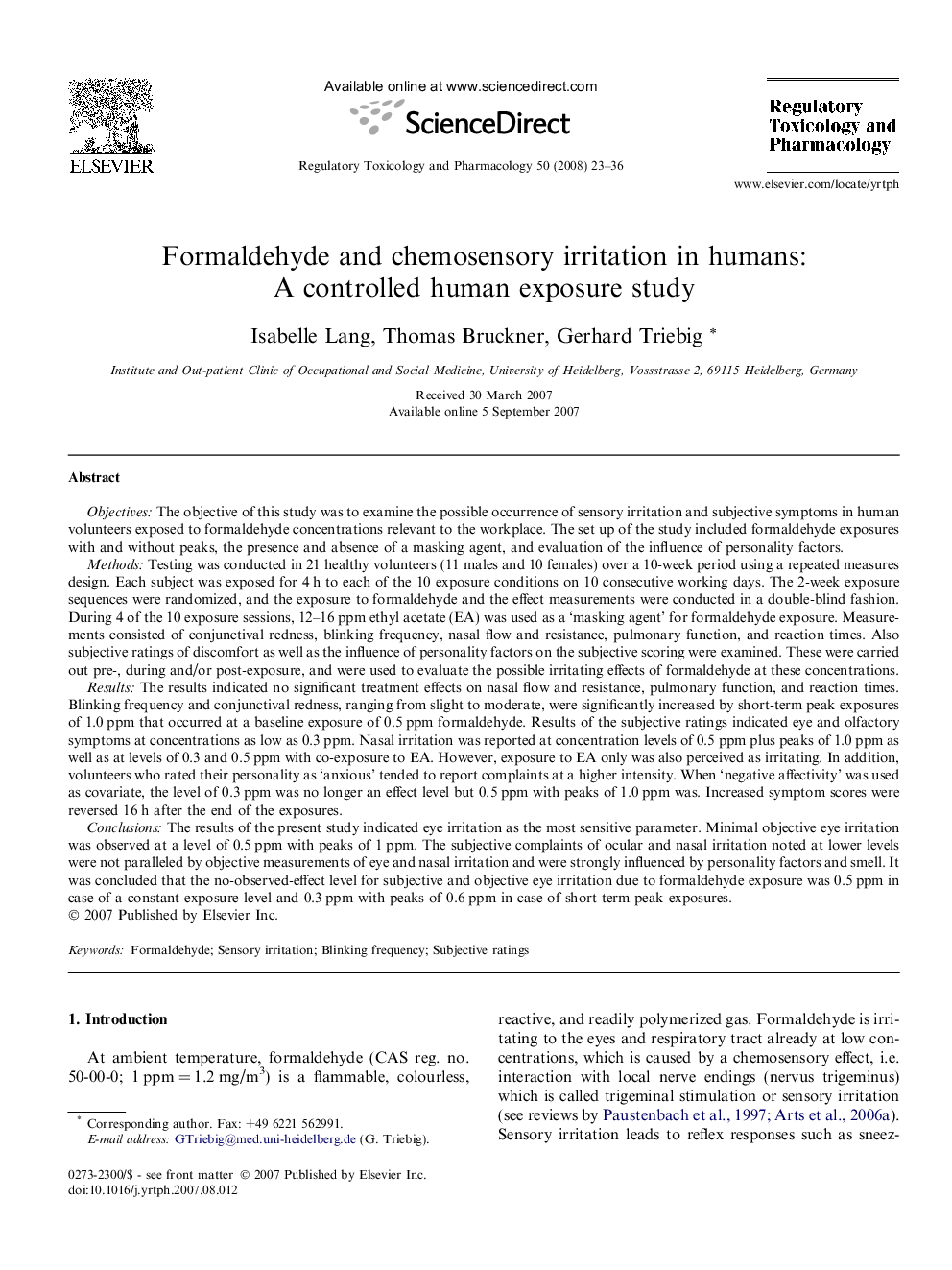| Article ID | Journal | Published Year | Pages | File Type |
|---|---|---|---|---|
| 2593002 | Regulatory Toxicology and Pharmacology | 2008 | 14 Pages |
Objectives: The objective of this study was to examine the possible occurrence of sensory irritation and subjective symptoms in human volunteers exposed to formaldehyde concentrations relevant to the workplace. The set up of the study included formaldehyde exposures with and without peaks, the presence and absence of a masking agent, and evaluation of the influence of personality factors.Methods: Testing was conducted in 21 healthy volunteers (11 males and 10 females) over a 10-week period using a repeated measures design. Each subject was exposed for 4 h to each of the 10 exposure conditions on 10 consecutive working days. The 2-week exposure sequences were randomized, and the exposure to formaldehyde and the effect measurements were conducted in a double-blind fashion. During 4 of the 10 exposure sessions, 12–16 ppm ethyl acetate (EA) was used as a ‘masking agent’ for formaldehyde exposure. Measurements consisted of conjunctival redness, blinking frequency, nasal flow and resistance, pulmonary function, and reaction times. Also subjective ratings of discomfort as well as the influence of personality factors on the subjective scoring were examined. These were carried out pre-, during and/or post-exposure, and were used to evaluate the possible irritating effects of formaldehyde at these concentrations.Results: The results indicated no significant treatment effects on nasal flow and resistance, pulmonary function, and reaction times. Blinking frequency and conjunctival redness, ranging from slight to moderate, were significantly increased by short-term peak exposures of 1.0 ppm that occurred at a baseline exposure of 0.5 ppm formaldehyde. Results of the subjective ratings indicated eye and olfactory symptoms at concentrations as low as 0.3 ppm. Nasal irritation was reported at concentration levels of 0.5 ppm plus peaks of 1.0 ppm as well as at levels of 0.3 and 0.5 ppm with co-exposure to EA. However, exposure to EA only was also perceived as irritating. In addition, volunteers who rated their personality as ‘anxious’ tended to report complaints at a higher intensity. When ‘negative affectivity’ was used as covariate, the level of 0.3 ppm was no longer an effect level but 0.5 ppm with peaks of 1.0 ppm was. Increased symptom scores were reversed 16 h after the end of the exposures.Conclusions: The results of the present study indicated eye irritation as the most sensitive parameter. Minimal objective eye irritation was observed at a level of 0.5 ppm with peaks of 1 ppm. The subjective complaints of ocular and nasal irritation noted at lower levels were not paralleled by objective measurements of eye and nasal irritation and were strongly influenced by personality factors and smell. It was concluded that the no-observed-effect level for subjective and objective eye irritation due to formaldehyde exposure was 0.5 ppm in case of a constant exposure level and 0.3 ppm with peaks of 0.6 ppm in case of short-term peak exposures.
